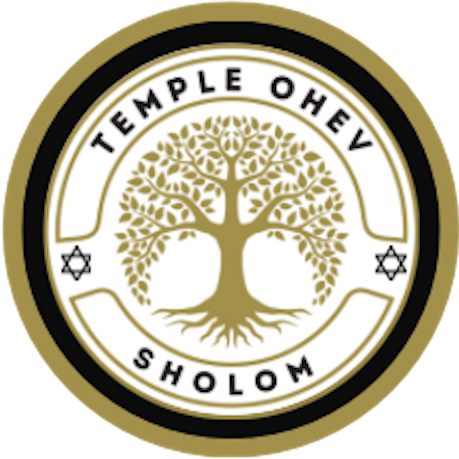
Birth, Bris (Circumcision), Brit (Covenant) and Baby Names
Mazal tov! The occasion of welcoming a child into the family and the community is one of the most joyous times imaginable! And there are many Jewish rituals associated with this time in the life of the family. Rabbi Kessler is happy to speak with expectant parents, grandparents-to-be and anyone about these elements of the Jewish life cycle. Jewish tradition going back to Abraham in the Torah maintains that a male child is to be circumcised on the 8th day of life (a “bris”). We are happy to connect you with a mohel (a specialist in circumcision as a religious ritual) in the area and also to participate in the simchah (joyous event). When there is a medical necessity, circumcision does not take place on the 8th day.
In the case of a baby girl (or when a bris has not been held with a boy), the primary religious ceremony revolves around taking on a Hebrew Name – a “covenant name.” These ceremonies take place any time after the 8th day (some choose a month, six months, a year or other times), and can occur during regular Shabbat services at the temple or in the family’s home. Please be in touch with Rabbi Kessler when considering options for naming your child.
In the case of both bris and “Hebrew Naming” ceremonies, the larger concept is bringing our children into the Covenant of the Jewish people. In fact, the Hebrew word “Brit” simply means covenant – an agreement between parties.
Jewish tradition considers adoption to be a tremendous mitzvah as well and there are similar ceremonies for welcoming a child into your family through adoption. These may also include a visit to the mikveh (Jewish ritual bath) accompanied by Rabbi Kessler.
As a Reform congregation, and a member of the Union for Reform Judaism, we affirm and welcome as Jews children brought in to a family who identify as Jews, regardless of patrilineal (through one’s father) or matrilineal (through one’s mother) descent. Traditionally, one was considered Jewish only if one’s mother was Jewish. However, Reform Judaism has accepted Jews by patrilineal descent since the Central Conference of American Rabbis passed a resolution on the matter in 1983. We are also very happy to celebrate these Jewish rituals with every family configuration that presents itself in our modern world.
Consecration
Each Sukkot, Temple Ohev Sholom welcomes the new students of our religious school with a special shabbat service to celebrate Consecration. We all join together in a prayer of thanksgiving and connection and each child receives their very own “mini Torah.” It is said that Jewish education should always begin on a sweet note, so there is always some kind of nosh (snack)!
Bar/Bat Mitzvah
To become a bar or bat mitzvah is to pass from childhood to maturity in the Jewish community. It is a ritual celebrated surrounded by family and community, and features the opportunity for a young 13-year-old to share a bit of their Jewish journey towards maturity. For a better picture of what it means to become a bar/bat mitzvah, take a look at the B’rit Hachanat B’nei Mitzvah – a Covenant of Preparation for Becoming Bar/Bat Mitzvah here.
Confirmation
Dating back to the early 1800s, the ceremony of Confirmation is a creation of the Reform Movement – with the earliest advocates suggesting it as a replacement for b’nai mitzvah. They reasoned that, in their day and age, 13 years old was no longer the age of “maturity,” but rather something around 16 years old. Also, they envisioned Confirmation as a spiritual and intellectual process, rather than a ritual concerned with the observance of specific “adult” mitzvot. Over the last 200 years, b’nai mitzvah have held their place within the Jewish community, and Confirmation has been more broadly adopted as a program of study culminating in a ceremony most often linked to the festival of Shavuot. At Temple Isaiah, our “Next Dor” program includes young adults in 8th-10th grade, and the final year of the program concludes with our Confirmands leading the worship service at our Shavuot evening service, reading Torah and teaching about the ways they have wrestled with Jewish belief and identity over the years of post-b’nai mitzvah education.
Wedding
Mazal Tov! The shouts and cries of the community when a couple stands under a huppah (wedding canopy) are among the most joyous of sounds! There are so many traditions that accompany the Jewish wedding that it is hard to imagine a concise summary. The common images: a beautiful ketubah (wedding contract) signed in front of witnesses; standing beneath a huppah which can be as simple or as ornate as a couple desires; sharing from a common cup filled with sweetness; the exchange of rings and vows; the breaking of the glass. All of these traditions and more are features of the weddings we are so fortunate to arrange as a community.
Rabbi Kessler will be happy to talk with any couple about their upcoming wedding. Within the spirit and customs of Reform Judaism, this includes couples seeking a Jewish wedding where only one partner is Jewish. Under specific circumstances, Rabbi Kessler will officiate these ceremonies. As well, Rabbi Kessler is pleased to be living in a state which has recently given full recognition to same sex weddings – and to help craft the Jewish wedding ceremony which is right for same sex couples.
Much more information about Jewish wedding customs can be found here.
Funeral
Baruch Dayan HaEmet – Blessed is the Righteous Judge
These are the words we are instructed to greet the news of the death of a loved one with. They are so strange, and yet they acknowledge that we live in a world of limits and boundaries, and that life itself has limits, imposed by a God who is righteous.
“In our tradition, mourners tear their clothing (kriah), either upon hearing about a death or at the time of burial. The tearing of cloth: what a powerful image. Cloth is made from numerous strands of flimsy threads that become strong when woven together. Such is human life – each one of us, alone, is like a thin thread, easily broken and able to support only a tiny portion of the weight of the world. Woven together, in family, friendship and community, our strength is multiplied and enhanced. Yet, when a person dies, a hole is torn in the weave and the fabric can unravel. Just one person, one thread….” (The Book of Jewish Sacred Practices, Jewish Lights Publishing, 2002, p. 158).
Being part of a community is so essential at a time of loss. We want to support and comfort you through this period. Please be in contact with Rabbi Kessler for help in scheduling a funeral, arranging for shiva services in the home, contacting a Jewish funeral home and for direction in coping with the death of a loved one.
For more information about all the Life Cycle moments detailed on this page, please explore https://reformjudaism.org/beliefs-practices/lifecycle-rituals.

